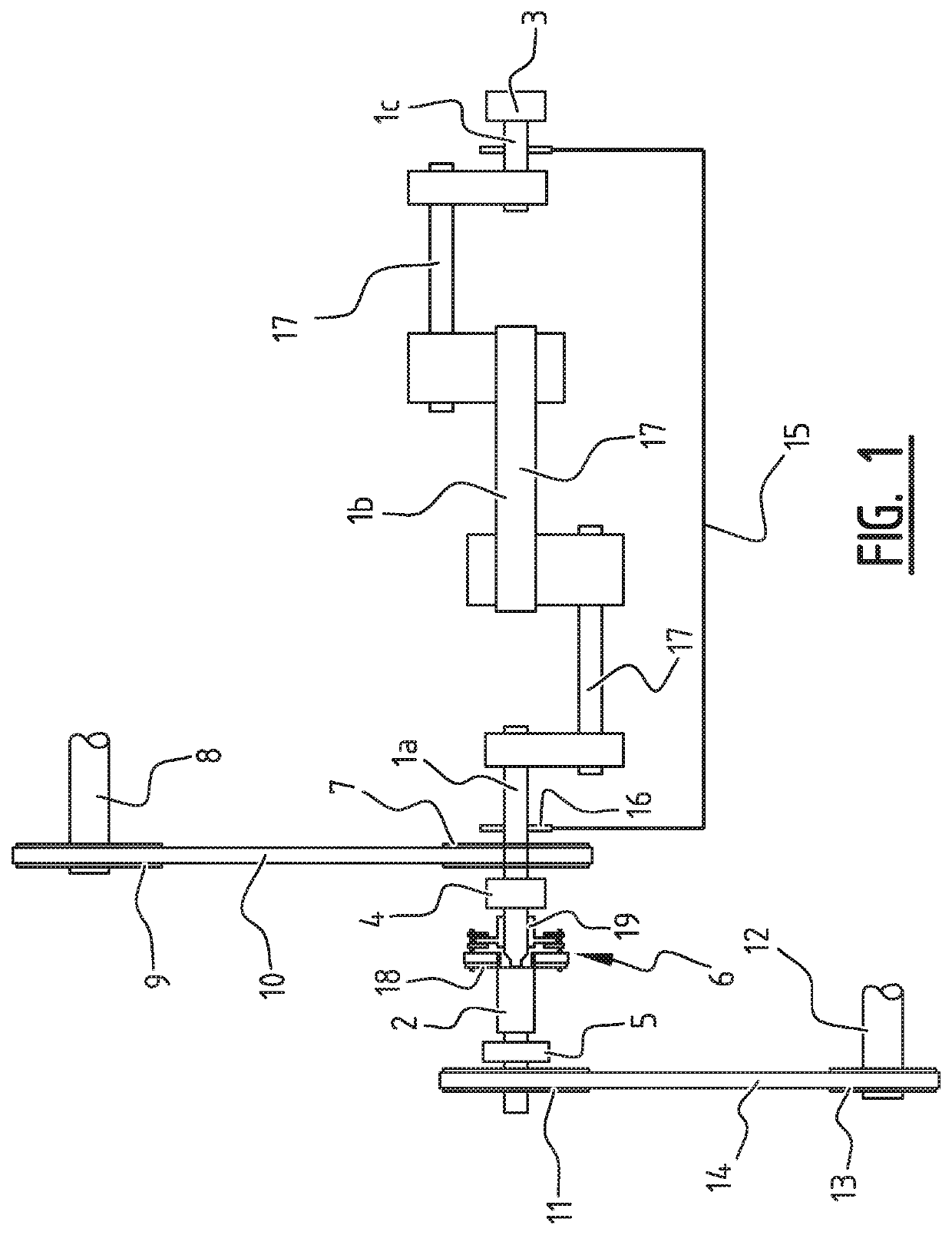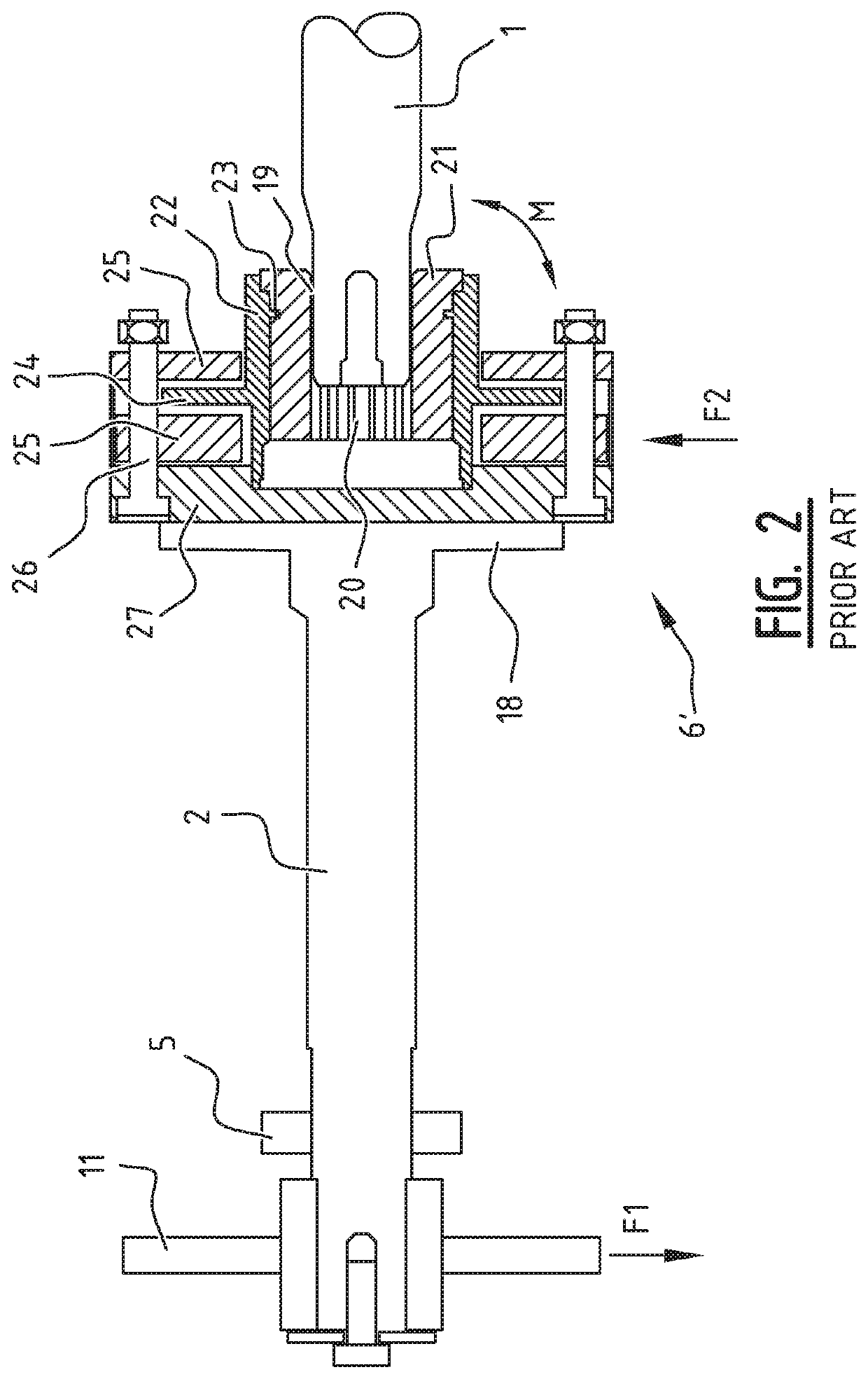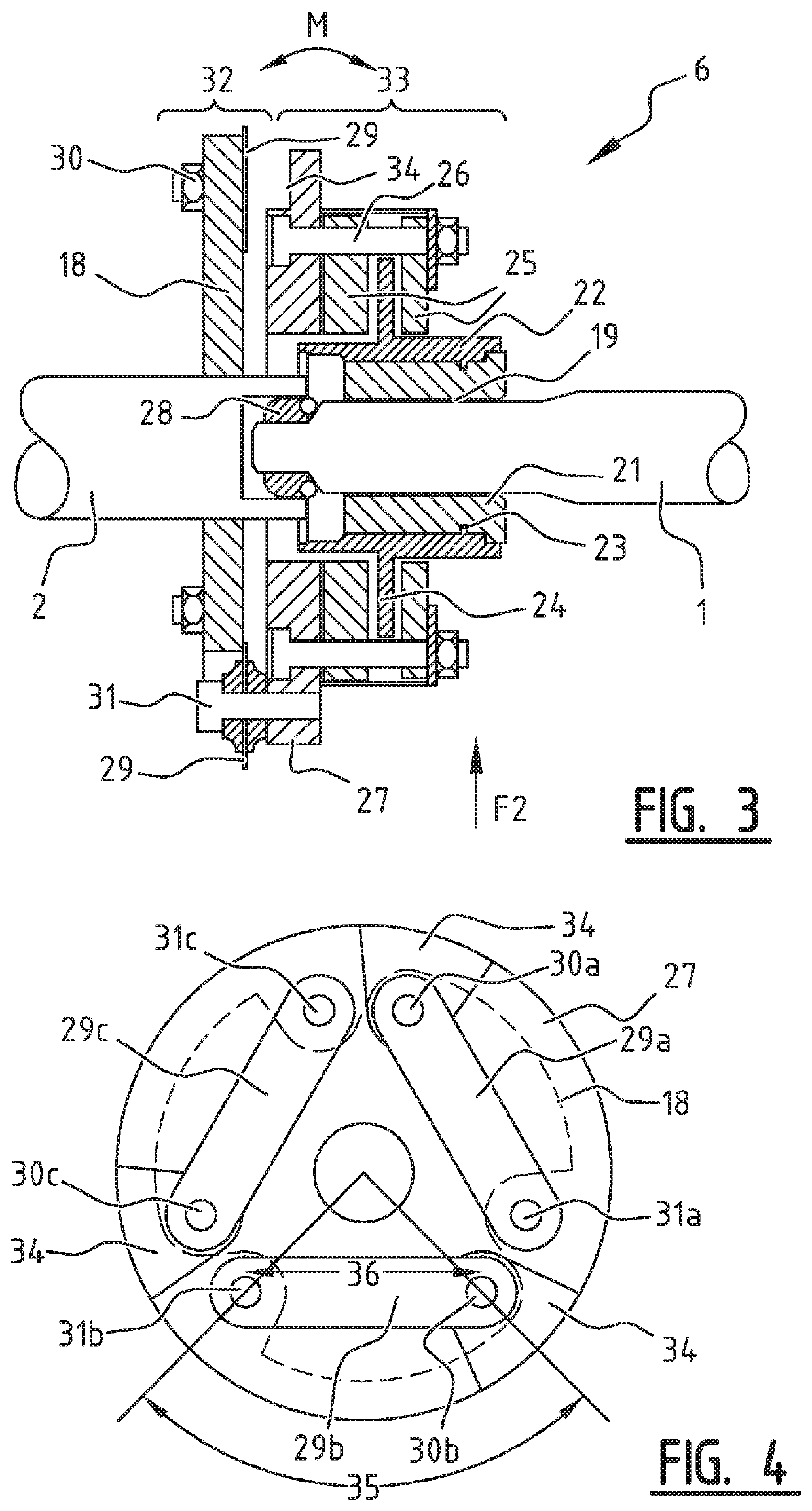Coupling
a technology of coupling and radial load, applied in the direction of slip coupling, agricultural machines, gearing, etc., can solve the problems of conventionally poor support of radial load and conventional poor support of couplings to transmit high torque, and achieve the effect of reducing the load and reducing the lifetim
- Summary
- Abstract
- Description
- Claims
- Application Information
AI Technical Summary
Benefits of technology
Problems solved by technology
Method used
Image
Examples
first embodiment
[0046]The assembled coupling of the first embodiment, as is shown in FIG. 3 comprises a first part 33 at an end of the first shaft 1, and comprises a second part 32 at an end of the second shaft 2. An axial torque can be transmitted from the first part 33 to the second part 32 via the spring plates 29. A radial load F2 can be supported by the fourth bearing 28. Movements M resulting from a misalignment between the first shaft 1 and the second shaft 2 are accommodated by both the fourth bearing 28 which is preferably spherical, and by the spring plates 29 as is described above. The effect is that movements resulting from a misalignment are allowed in the coupling 6 with a minimal resistance so that no significant radial torque forces arise. This significantly decreases the wear on the spline connection 19.
second embodiment
[0047]FIGS. 5 and 6 show the invention, wherein the segment of the coupling between the first flange element 27 and the first shaft 1 is substantially identical to the embodiment of FIG. 3. Therefore a description of this part is omitted and reference is made to the description above.
[0048]In the embodiment of FIG. 5 a spring plate 29 is provided that comprises the first connection 28 in a central part of the coupling 6 and the second connection at the periphery of the coupling 6. Particularly, the spring plate 29 comprises a central opening wherein the second shaft 2 is inserted. By this insertion of the second shaft 2 in the central opening of the spring plate 29, radial loads F2 can be supported. Furthermore, the spring plate 29 is provided at its periphery with multiple protrusions. There protrusions are best illustrated in FIG. 6. Each of the protrusions corresponds to a location or corresponding location at the first or second flange element. In the embodiment of FIG. 5, bendi...
third embodiment
[0050]FIG. 7 shows the invention, wherein the coupling part between the first shaft 1 and the first flange element 27 is identical to the previous embodiments. The coupling comprises a first connection 28 formed by a fourth bearing located in the central part of the coupling, and comprises a second connection at the periphery of the coupling, which is in the embodiment of FIG. 7 formed by a spherical spline connection 39. The fourth bearing 28 is also formed as a spherical bearing 28, so that the fourth bearing can support a radial load and accommodate a misalignment of the first shaft 1 and the second shaft 2. An inner part of a spherical spline 37 is connected to the second shaft 2. This inner part 37 is connected to an outer part 38 of a spherical spline. This outer part 38 forms a flange 40 that is rigidly connected to the first flange 27. Tolerances of the fourth bearing 28 and the spline connection 39 are designed such that at least the majority of a radial load is supported b...
PUM
 Login to View More
Login to View More Abstract
Description
Claims
Application Information
 Login to View More
Login to View More - R&D
- Intellectual Property
- Life Sciences
- Materials
- Tech Scout
- Unparalleled Data Quality
- Higher Quality Content
- 60% Fewer Hallucinations
Browse by: Latest US Patents, China's latest patents, Technical Efficacy Thesaurus, Application Domain, Technology Topic, Popular Technical Reports.
© 2025 PatSnap. All rights reserved.Legal|Privacy policy|Modern Slavery Act Transparency Statement|Sitemap|About US| Contact US: help@patsnap.com



